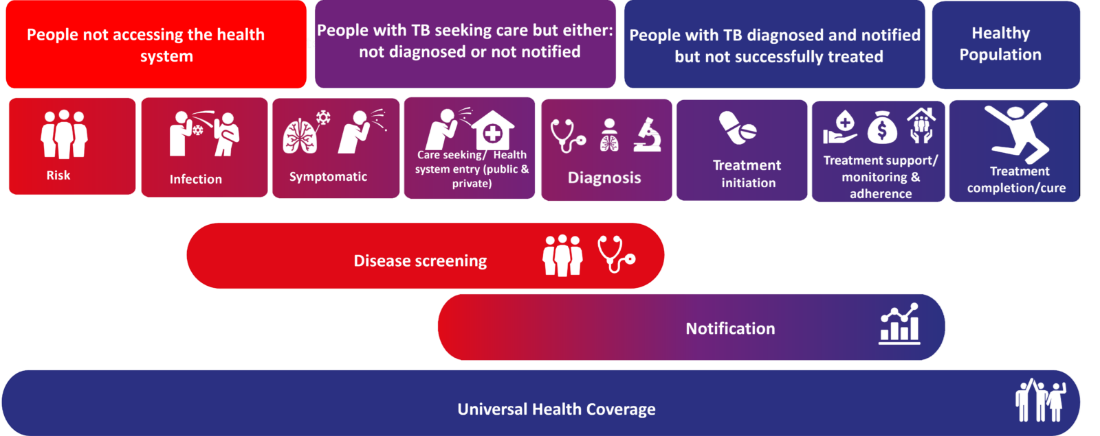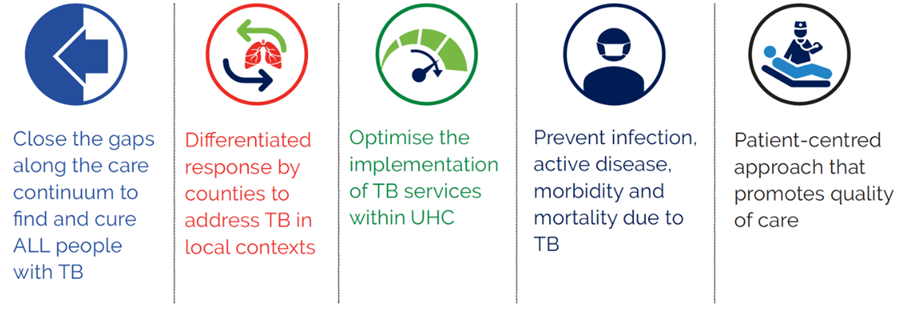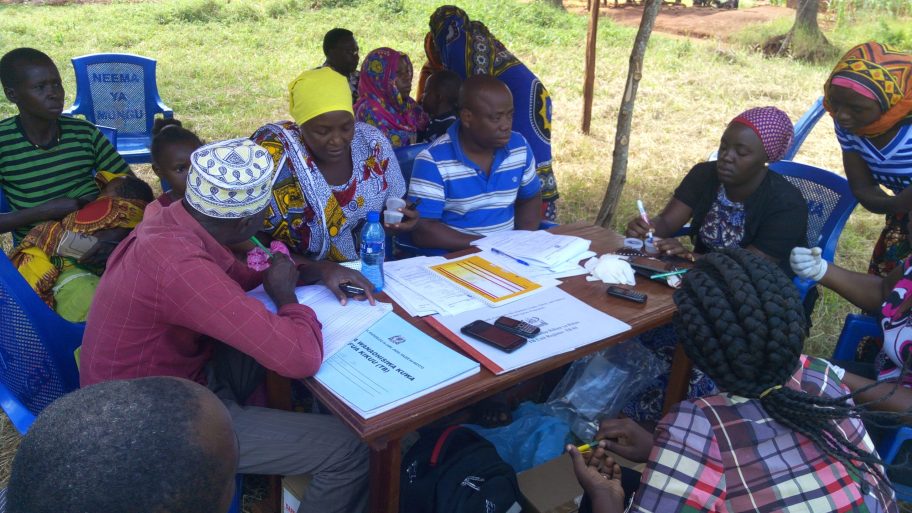Delivery of people-centered services
Optimization can be reached through realigning and prioritizing intervention packages that increase efficiencies in the delivery of people-centered TB services, closer to where they should be delivered to meet patient preferences. Substantial investments in data systems, surveys, and tools have led to the availability of national and sub-national data that are comprehensive, current and usable. An unprecedented opportunity to use data on epidemiology, health system capacities and patient care seeking behavior is now in our hands to drive programmatic impact towards TB elimination. However, without rigorous synthesis and analysis, various sources of data can be overwhelming and not lead to evidence-based programming.

Patient Pathway Analysis
The patient pathway analysis (PPA) approach was created to better understand how patient care needs and the availability of healthcare services align. The findings can help with programme planning and priority setting for greater patient-centered service availability. The PPA attempts to outline the processes TB patients undergo from the time they first seek treatment to the time they are finally cured. The report also examines the accessibility of TB screening, diagnosis, and treatment across the spectrum of the healthcare system. The PPA may highlight areas where TB patients encounter delays in care seeking or treatment initiation, obtain inappropriate care, or are lost to follow-up during their journey toward cure by looking at the alignment of care seeking with service availability. The PPA aims to assist national tuberculosis programs in more precisely identifying some of the gaps in the alignment of the health systems that can be closed through focused program interventions.
Developing optimised, costed and evidence based National Strategic Plans
National Strategic Plans should enable countries to use the generated evidence and evidence-based strategies to negotiate harmonized and optimized engagement and resource allocations from domestic and external stakeholders alike. These NSPs would be the basis of a robust national response towards ending TB in line with the End TB Strategy and overall national moves towards Universal Health Coverage (UHC). The resulting NSPs will also enable countries to follow an accelerated Global Fund application process under the new application format tailored to respective country NSP. KNCV since 2019 has supported over 10 countries to develop evidence based, country led, prioritised and costed National Strategic Plans. Using the People Centred Framework (PCF), countries can view their TB programs through the patient lens, to identify gaps along the patient care continuum and identifying high impact interventions to address these gaps.
Strategic Focus


